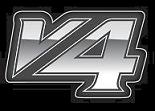The V4 Tracking Engine includes proprietary tracking filters designed to achieve optimal tracking response, especially in difficult tracking environments.
To access the signal and tracking filters, click on an input in the input list to open the details panel.
The V4 Tracking Engine is able to set average tracking filter settings automatically and it is recommended to use this function first.
To set the tracking filters automatically, click on "Signal" in the input details panel. Click the "Auto Adjust" button and walk around the performance area while carrying a Tag.
Average Tracking Filter settings will now be applied globally to all Tags in the system.
Fine tuning of Tracking Filters
Tracking response filters set automatically may be fine tuned by the user if desired and applied either globally or for individual Tags.
Signal Filters
In the details panel, click on "Signal". This will open the Signal Settings dialogue box.
Click on the ”padlock” icon to access the advanced signal settings.
To the right of the real time graph display, there are two sliders. These are used to set the "db" and "Packet Quality" filters.
- Db Filter
Moving the db slider will adjust the signal db threshold. All signals arriving at the RadioEye having a db level below this threshold will be ignored by the system.
This filter is useful to reject weak reflections.
- Quality Filter
Moving the Quality slider will adjust the Packet Quality threshold. All signals arriving at the RadioEye having a Quality level below this threshold will be ignored by the system.
Packet Quality is a measurement of how reliable an incoming data packet may be. If the RadioEye interprets a data packet as arriving from multiple locations, the packet has possibly been distorted by reflections and it will be allocated a low Quality number. If the RadioEye interprets a data packet as arriving from one definite location, this packet is probably carrying reliable positional information and will be allocated a high quality number.
All adjustments made to signal filters will be applied globally to all Tags unless the "Apply to this input only" box is ticked.
Tracking Filters
To access the Tracking Filter settings, click on "�Tracking" in the input details panel. This will open the real time Tracking plot.
The Tracking plot is a real time display of all data packets which have been allowed into the system by the signal filters (see above).
The centre green dot represents the current Tag position.
The green circle surrounding the Tag position represents the current Catch Radius setting.
Both the Tag position indicator and Catch Radius circle will turn red if the Speed Limit setting is exceeded.
The real time plot provides valuable information about how many data packets are being processed by the system and how reflective the tracking environment is.
Beneath the plot are two sliders. These are used to set the "Speed Limit" and "Catch Radius" filters.
- Speed Limit
Moving the Speed Limit slider will adjust the Speed Limit filter.
The Speed Limit sets a limit on how fast the Tag is allowed to move on the stage. Should a packet arrive from a position which could only have been reached by exceeding the speed limit, there is a high probability that the packet is the result of a reflection. It will therefore be ignored by the system.
- Catch Radius
Moving the Catch Radius slider will adjust the size of the Catch Radius filter.
The Catch radius sets a virtual boundary around the Tag position. Any data packets arriving from positions outside this boundary will be ignored by the system.
- Block out areas
Left-clicking and dragging in the Tracking Settings screen will draw a rectangular "Block out area." The Block out area on the screen relates to the same physical area of the stage.
Any positional signals entering the system from a Block out area will be ignored. This can be helpful in reducing erroneous positions from locations which are known to be reflective, such as static scenery positions.
Right clicking on a Block out area will give the user the option of deleting the Block out area.
All adjustments made to tracking filters will be applied globally to all Tags unless the "Apply to this input only" box is ticked.
|
